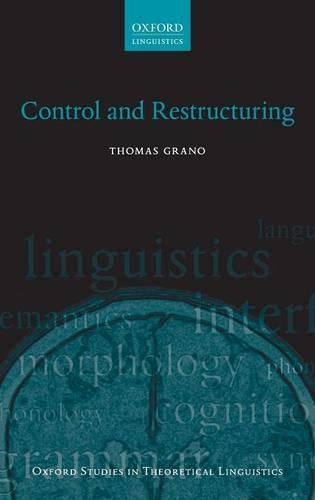Readings Newsletter
Become a Readings Member to make your shopping experience even easier.
Sign in or sign up for free!
You’re not far away from qualifying for FREE standard shipping within Australia
You’ve qualified for FREE standard shipping within Australia
The cart is loading…






This book investigates the phenomenon of control structures, configurations in which the subject of the embedded clause is missing and is construed as coreferential with the subject of the embedding clause (e.g. John wanted to leave). It draws on data from English, Mandarin Chinese, and Modern Greek to investigate the relationship that control bears both to restructuring - the phenomenon whereby some apparently biclausal structures behave as though they constitute just one clause - and to the meanings of the embedding predicates that participate in these structures. Thomas Grano argues that restructuring is cross-linguistically pervasive and that, by virtue of its co-occurrence with some control predicates but not others, it serves as evidence for a basic division within the class of complement control structures. This division is connected to how the semantics of the control predicate interacts with general principles of clausal architecture and of the syntax-semantics interface. His findings have general implications both for clausal structure and for the relationship between form and meaning in natural language.
$9.00 standard shipping within Australia
FREE standard shipping within Australia for orders over $100.00
Express & International shipping calculated at checkout
This book investigates the phenomenon of control structures, configurations in which the subject of the embedded clause is missing and is construed as coreferential with the subject of the embedding clause (e.g. John wanted to leave). It draws on data from English, Mandarin Chinese, and Modern Greek to investigate the relationship that control bears both to restructuring - the phenomenon whereby some apparently biclausal structures behave as though they constitute just one clause - and to the meanings of the embedding predicates that participate in these structures. Thomas Grano argues that restructuring is cross-linguistically pervasive and that, by virtue of its co-occurrence with some control predicates but not others, it serves as evidence for a basic division within the class of complement control structures. This division is connected to how the semantics of the control predicate interacts with general principles of clausal architecture and of the syntax-semantics interface. His findings have general implications both for clausal structure and for the relationship between form and meaning in natural language.